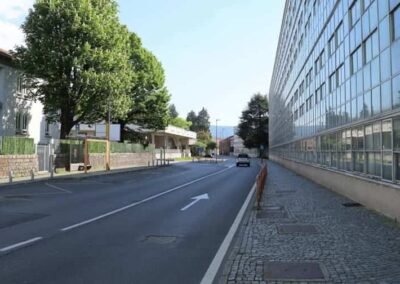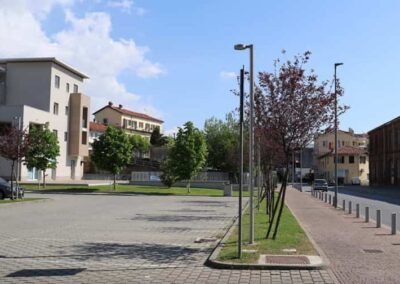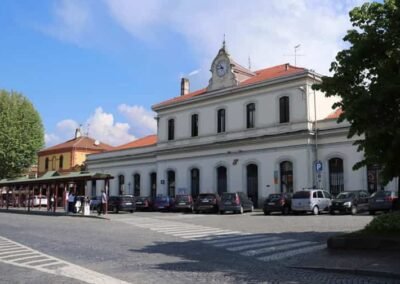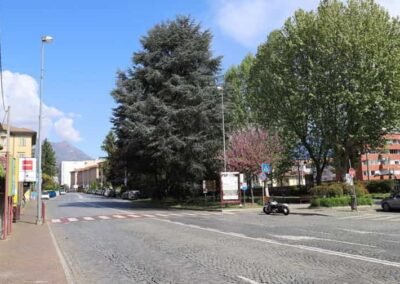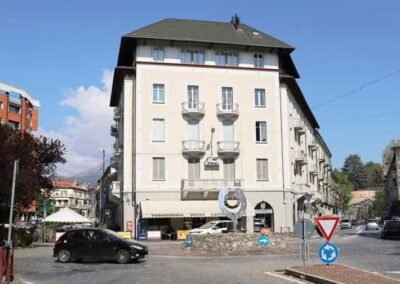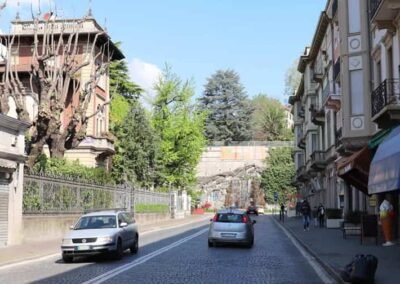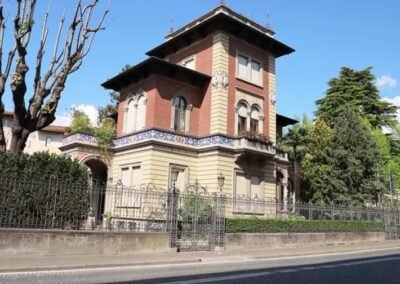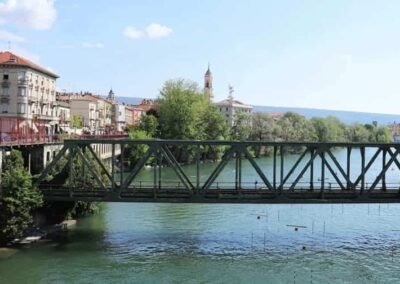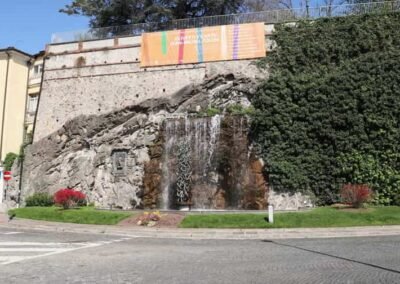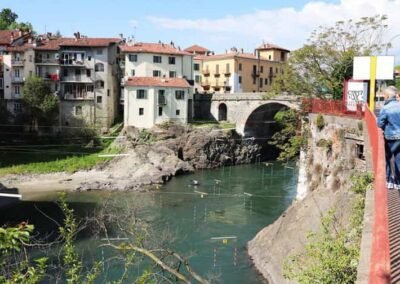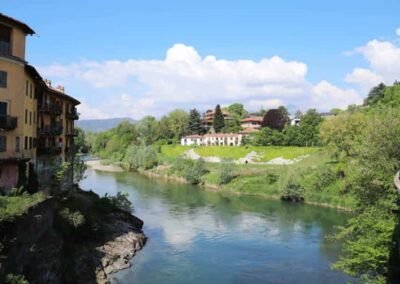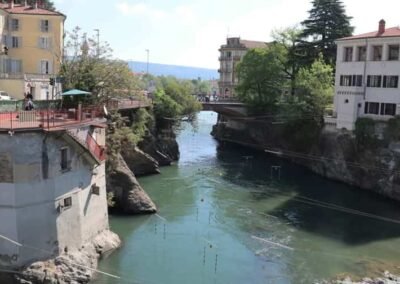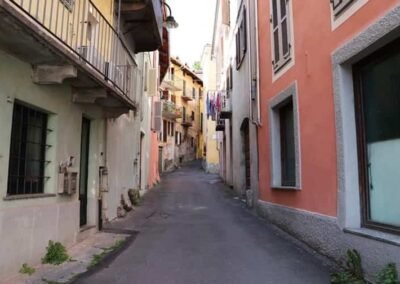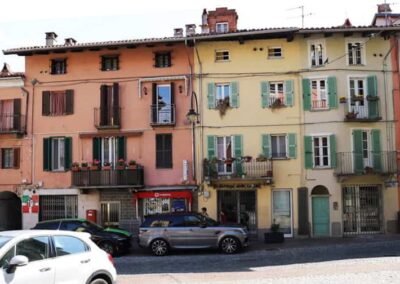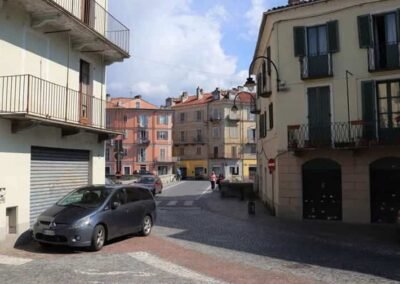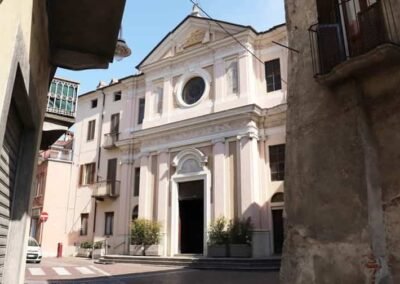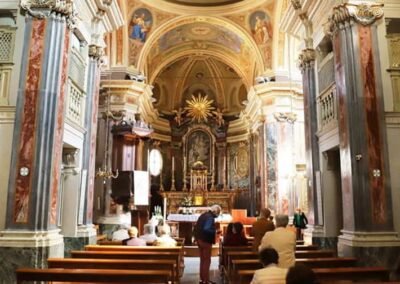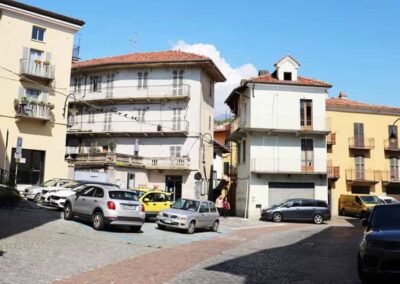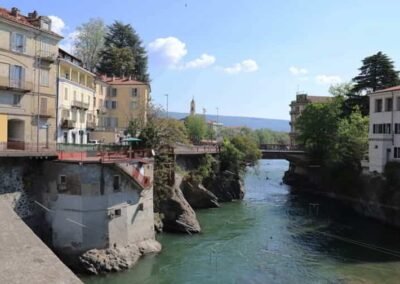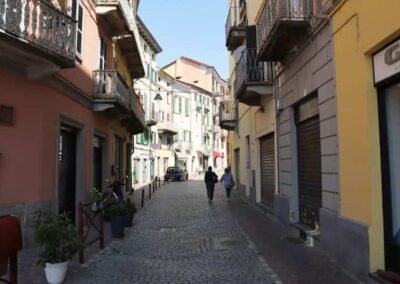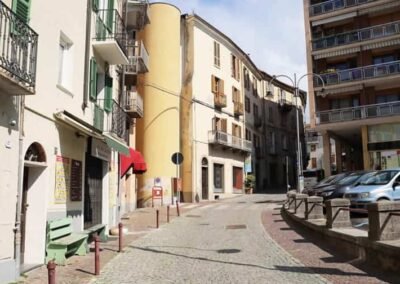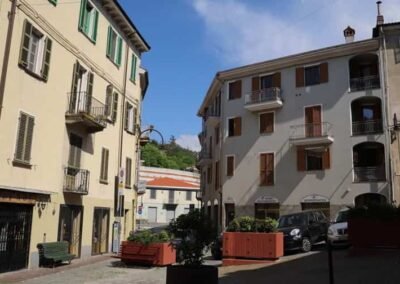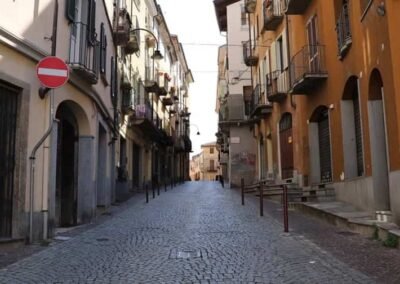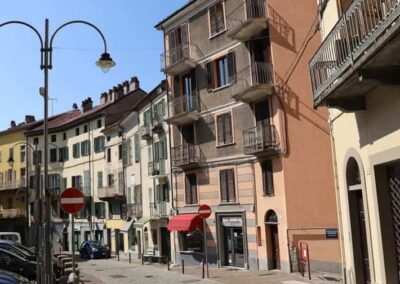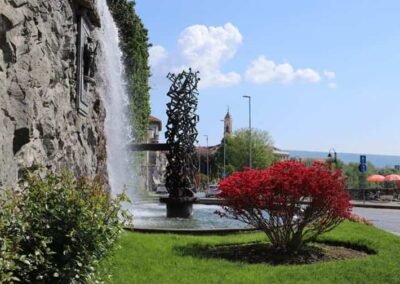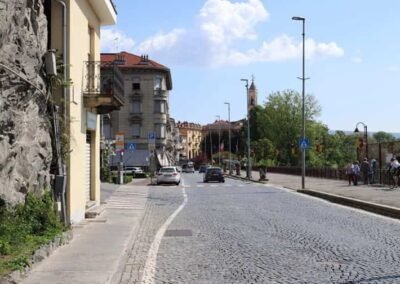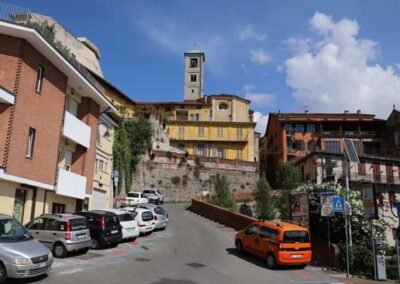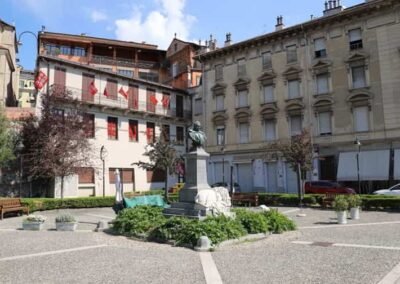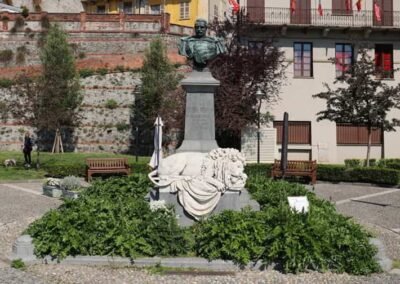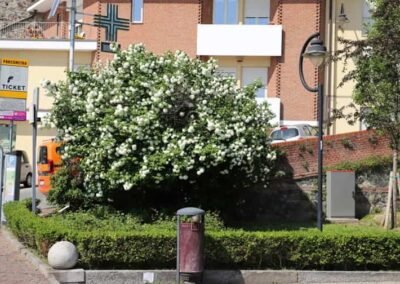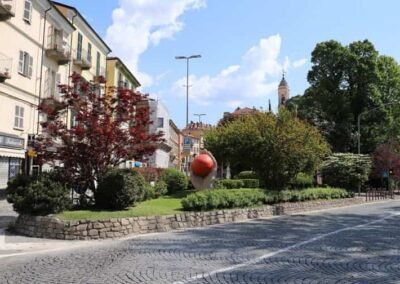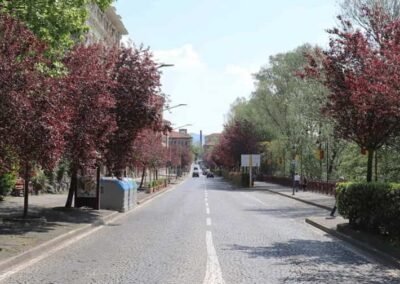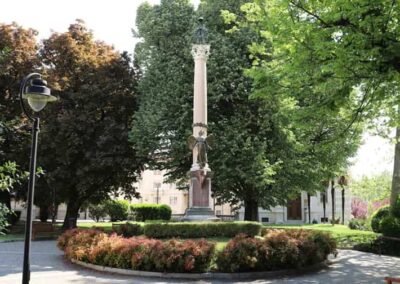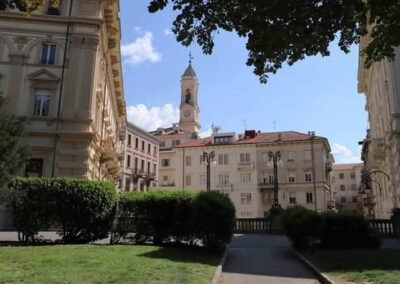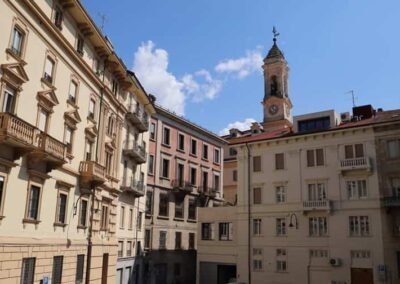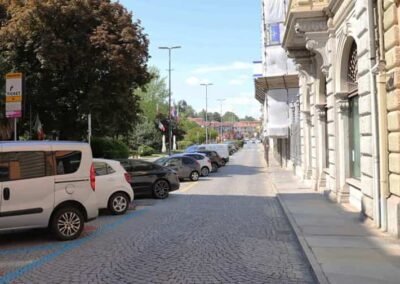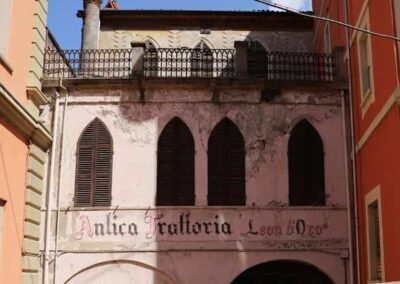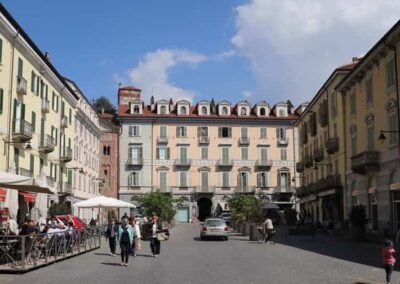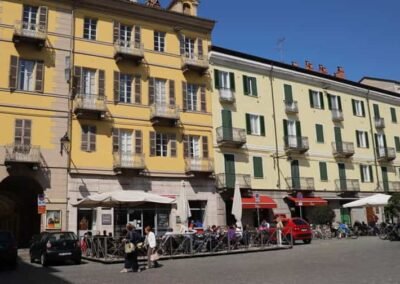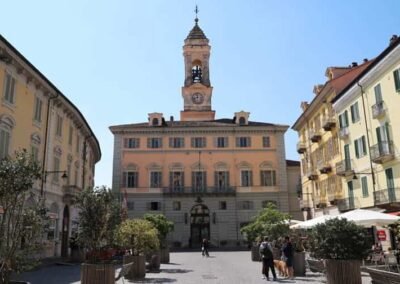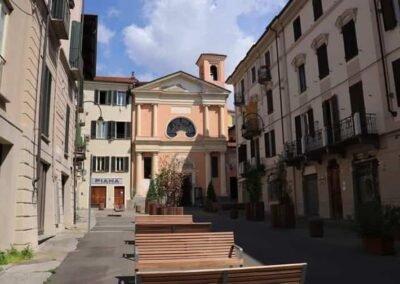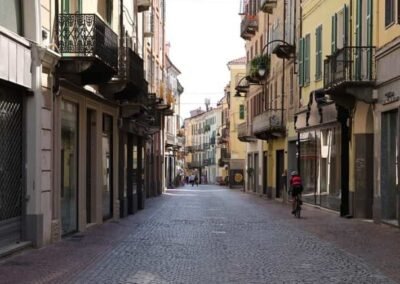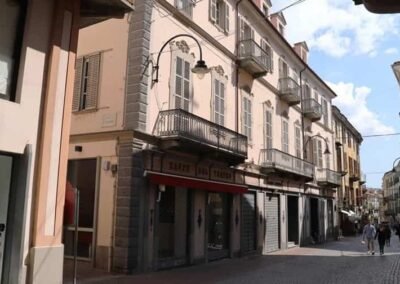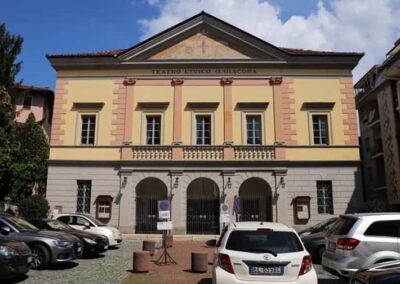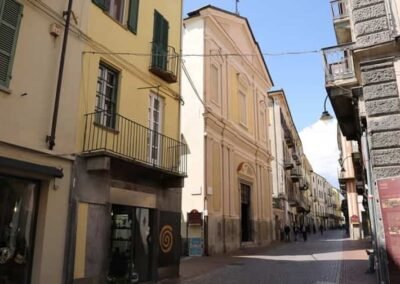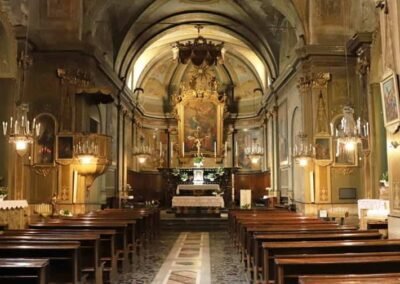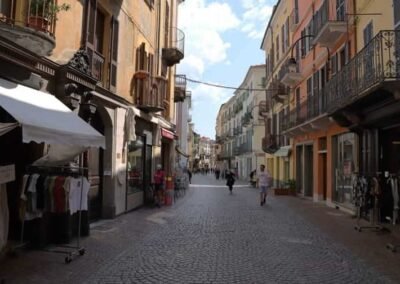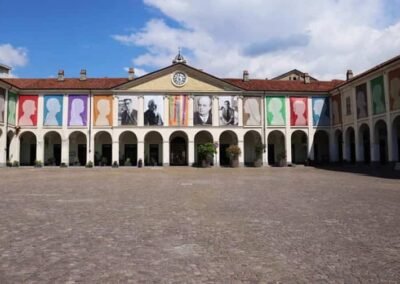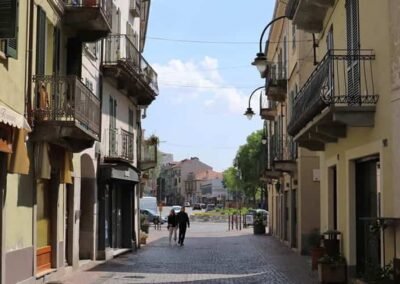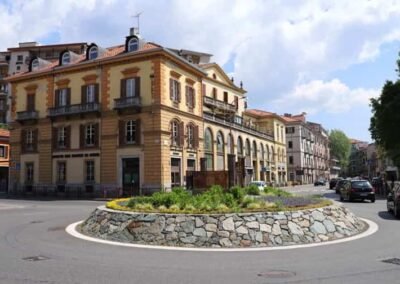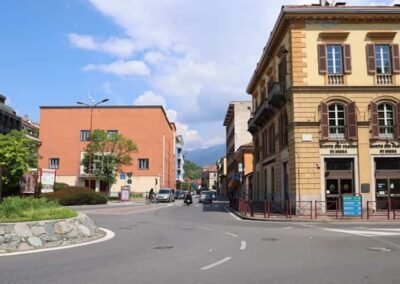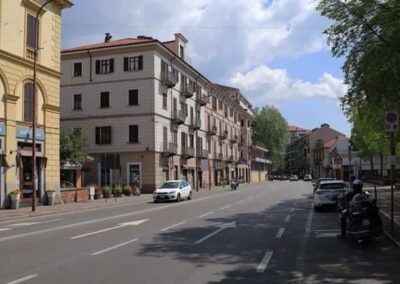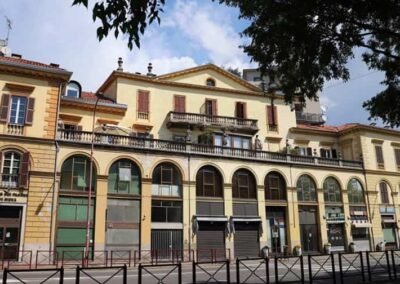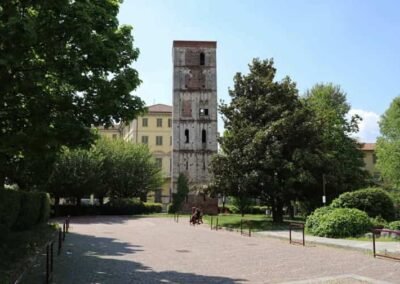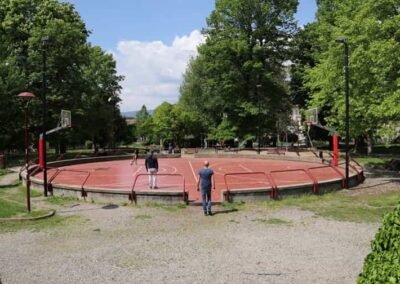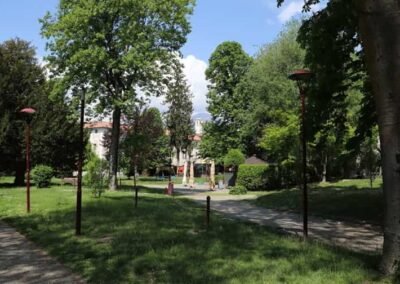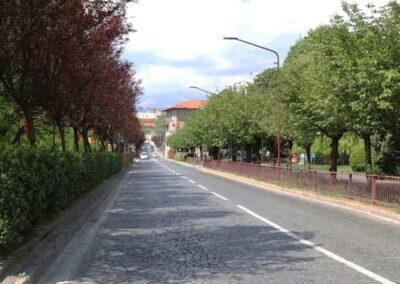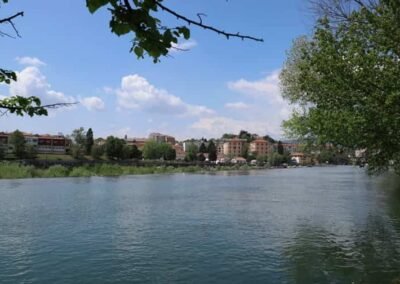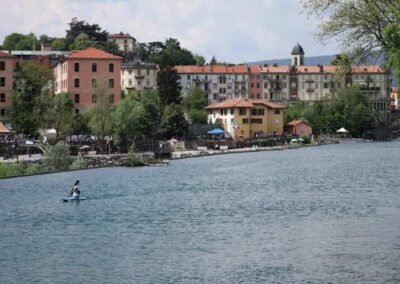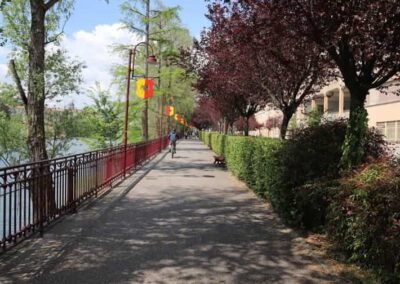HOME
THE REGIONS OF ITALY
PLACES IN ITALY
Italy in Photos
Corso Massimo D’Azeglio, 10015 Ivrea TO, Italy April 2022
Ivrea
Ivrea is a picturesque town in the Piedmont region of northern Italy, nestled in the foothills of the Alps along the Dora Baltea River. With a population of around 23,000, it is renowned for its rich history, cultural significance, and its status as a UNESCO World Heritage site. Ivrea is a town that blends its ancient Roman roots with modern industrial heritage, creating a fascinating destination for visitors interested in history, technology, and Italian culture. One of Ivrea’s most significant claims to fame is its deep connection to the early history of modern industry, particularly through the presence of Olivetti, the renowned typewriter and office machine manufacturer. Founded in Ivrea in 1908 by Camillo Olivetti, the company became a symbol of innovation and modernity in the 20th century. Under the leadership of Camillo’s son, Adriano Olivetti, the company not only revolutionized office technology but also pioneered progressive ideas about labour, design, and social responsibility. Ivrea was transformed into an experimental industrial city, where workers’ well-being, education, and culture were prioritized. The town is dotted Eporedia, a strategic military outpost. The remnants of its Roman past can still be seen in its ancient walls and roads. Over the centuries, Ivrea became an important medieval town, ruled by a series of noble families and serving as the seat of a bishopric. The town’s medieval heritage is reflected in its architecture, with landmarks like the Ivrea Castle, built in the 14th century. This imposing brick fortress, with its four cylindrical towers, dominates the skyline and is a reminder of the town’s strategic importance in medieval times. Another historical highlight of Ivrea is the Cathedral of Santa Maria Assunta, a beautiful Romanesque structure that dates back to the 10th century. The cathedral’s simple yet elegant façade and its ancient crypt, which features columns from the Roman period, make it one of the town’s most significant religious sites. It sits at the heart of Ivrea’s old town, a charming area with narrow cobblestone streets, vibrant piazzas, and traditional Italian cafes.
One of the most colourful and unique aspects of Ivrea’s cultural life is its famous Battle of the Oranges, a key part of the town’s annual Carnival celebrations. This lively and historic festival, which takes place in February, is said to commemorate a medieval rebellion against a local tyrant. During the festival, participants divide into teams and engage in a massive, friendly orange-throwing battle that fills the town’s streets with energy, excitement, and the vibrant colours of thousands of oranges. Surrounded by the scenic beauty of the Piedmontese Alps, Ivrea is also a gateway to outdoor activities such as hiking, cycling, and skiing. The town is located near several natural parks and lakes, offering ample opportunities for nature lovers to explore the surrounding landscape. Ivrea is a town that offers a rich tapestry of history, culture, and innovation. From its Roman origins to its industrial legacy with Olivetti, and its lively traditions like the Battle of the Oranges, Ivrea provides visitors with a unique and enriching experience. Whether exploring its architectural landmarks, learning about its industrial heritage, or simply enjoying its scenic beauty, Ivrea stands as a testament to Italy’s ability to blend the past with the present in a vibrant and engaging way.
Worth a Visit
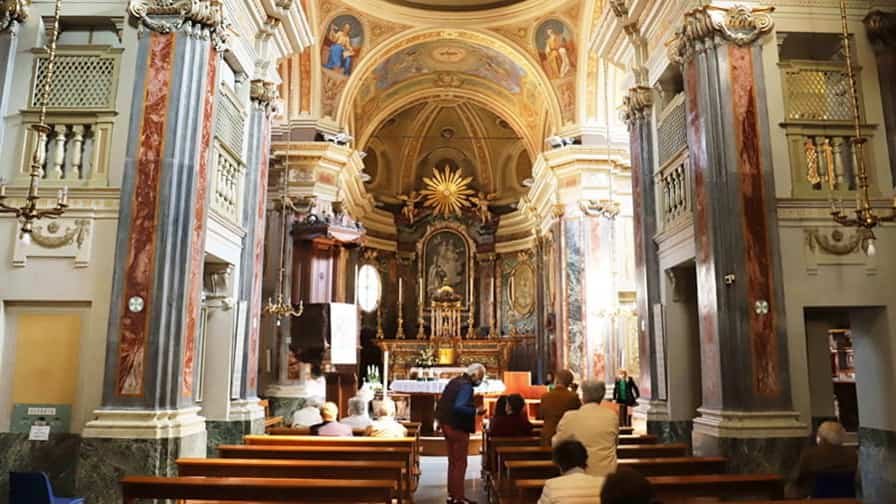
The Chiesa di San Grato in Ivrea is a small yet deeply meaningful church that reflects the spiritual traditions and historical identity of this Piedmontese town. Dedicated to Saint Gratus, the patron saint of Aosta and a figure closely associated with the protection of fields and harvests, the church embodies the link between faith, community, and the natural rhythms of life. Though more modest than Ivrea’s grander religious monuments, San Grato stands out as a place of devotion that preserves local heritage and offers a glimpse into centuries of rural and civic culture. The origins of the Chiesa di San Grato date back to the medieval period, when chapels and churches dedicated to the saint were frequently built in agricultural communities.
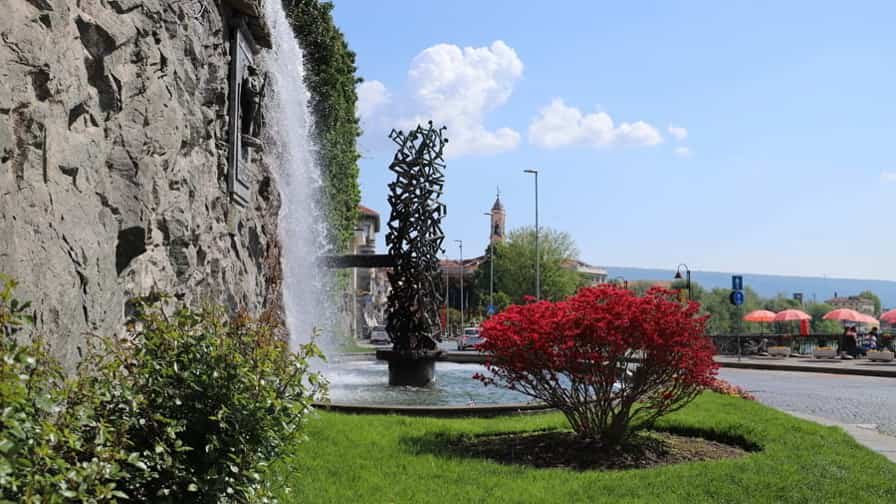
The Corso Cavour in Ivrea is one of the town’s most important and elegant thoroughfares, a street that reflects both its historical development and its vibrant modern character. Stretching through the heart of this Piedmontese city, Corso Cavour serves as a central axis that connects different districts while also offering a space where commerce, culture, and daily life intersect. Named after Camillo Benso, Count of Cavour, one of the principal architects of Italian unification, the avenue pays tribute to his political vision while embodying Ivrea’s role as a dynamic and forward-looking town. Historically, the street took shape during the 19th century, when many Italian cities underwent urban reorganization to adapt to modern needs. Corso Cavour was designed as a broad, straight avenue that reflected the ideals of order.
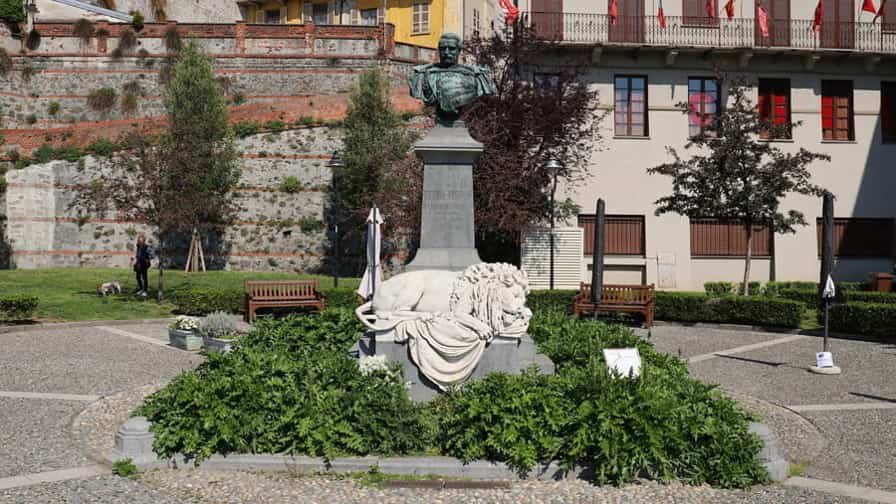
The Piazza Perrone in Ivrea is a central and atmospheric square that reflects the history, culture, and civic life of this Piedmontese town. Like many Italian piazzas, it functions as both a physical crossroads and a symbolic heart, bringing together architecture, social activity, and memory in a single urban space. Over time, Piazza Perrone has become not only a practical meeting point but also a place that embodies the layered history of Ivrea, from its medieval roots to its modern identity. The origins of the square date back to the town’s historical expansion, when open spaces were created to host markets, religious gatherings, and civic events. Its name, Perrone, is believed to honour a distinguished family or figure linked to Ivrea’s past, a reminder of the important role that local lineages and benefactors played in shaping urban spaces.
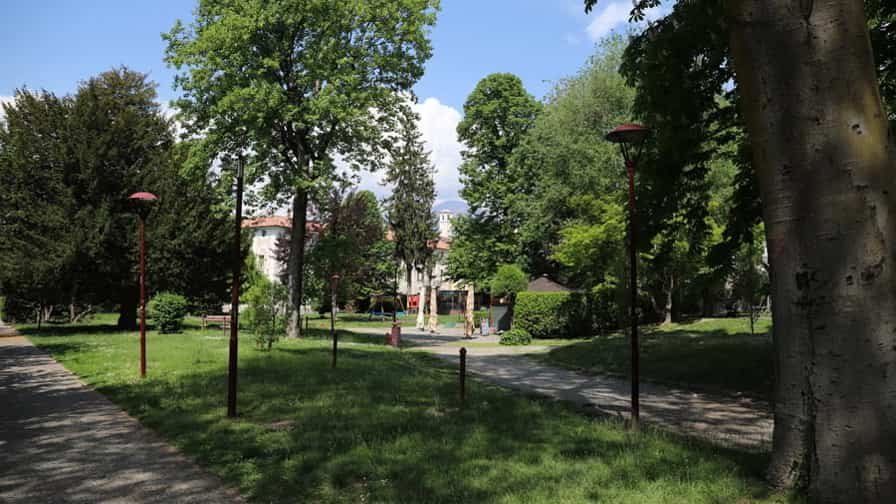
The Giardini Giusiana in Ivrea are a green oasis in the heart of the city, offering residents and visitors a tranquil space for relaxation, leisure, and reflection. Located near the historic centre, the gardens are an important part of the town’s urban landscape, balancing Ivrea’s architectural heritage and industrial past with the simple beauty of nature. For generations, the Giardini Giusiana have served as a place where people gather, stroll, and enjoy moments of calm, making them one of Ivrea’s most beloved public spaces. The gardens take their name from Count Giovanni Giusiana, a benefactor who, in the 19th century, donated this area to the city with the specific purpose of creating a public park.
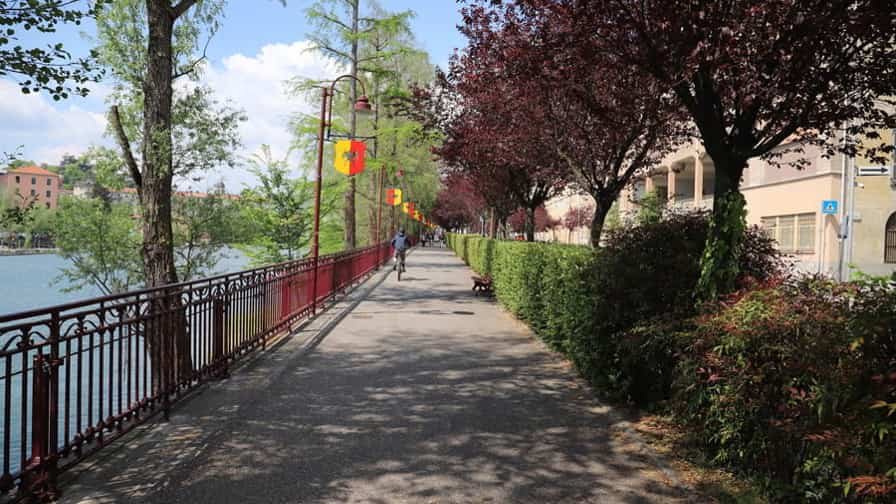
The Corso Re Umberto in Ivrea is one of the town’s most important and elegant thoroughfares, combining the charm of historical architecture with the energy of modern city life. Stretching through the urban fabric, this grand avenue acts as a central axis that connects different parts of the city while providing a vibrant stage for everyday activities, cultural encounters, and commerce. Its name, dedicated to King Umberto I of Savoy, reflects Italy’s monarchical past and the tradition of honouring the House of Savoy in Piedmontese cities, where history and identity are deeply intertwined. Unlike the narrow medieval streets typical of Ivrea’s old centre, Corso Re Umberto stands out for its width, symmetry, and urban elegance. It was designed during a period of modernization when many Italian towns sought to open broad avenues that would embody progress, civic pride, and accessibility.
Photo Gallery of Walk 1 in Ivrea – Via Guglielmo Jervis to Piazza Gioberti
Approximately 1.40 km – 0.86 miles
The walk starts in – Via Guglielmo Jervis – Corso Costantino Nigra – Via delle Rocchette – Via Gozzano – Chiesa San Grato in Borghetto, Via Gozzano – Via Gozzano – Via delle Rocchette – Piazza Gioberti
Photo Gallery of Walk 2 in Ivrea – Via Indipendenza to Piazzale del Duomo
Approximately 1.34 km – 0.83 miles
The walk starts in – Corso Cavour – Piazza Perrone – Corso Cavour – Corso Re Umberto – Giardino Marinai d’Italia – Corso Cavour – Piazza Ferruccio Nazionale – Via Palestro – Piazza Santa Marta – Via Palestro – Via Giacosa – Piazza Teatro – Via Giacosa – Via Palestro – Chiesa San Salvatore, Via Palestro – Via Palestro – Piazza Ottinetti – Via Palestro – Corso Massimo D’Azeglio – Corso Botta – Giardini Giusiana, Corso Re Umberto – Corso Re Umberto
COPYRIGHT © 2018-2025 ITALY IN PHOTOS - ALL RIGHTS RESERVED
